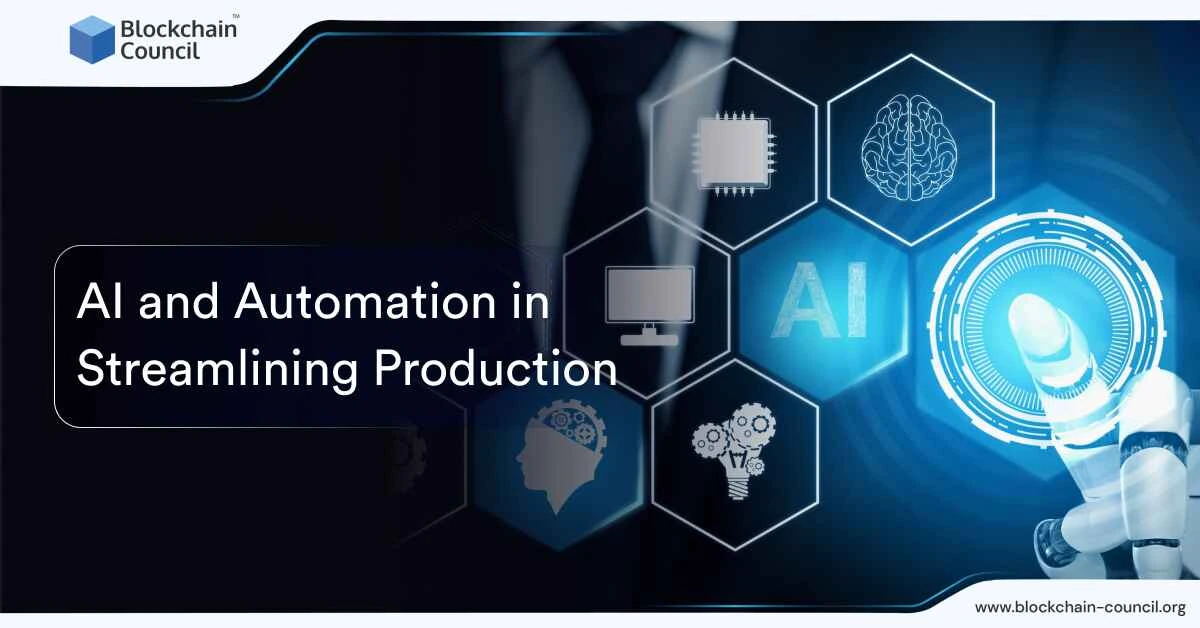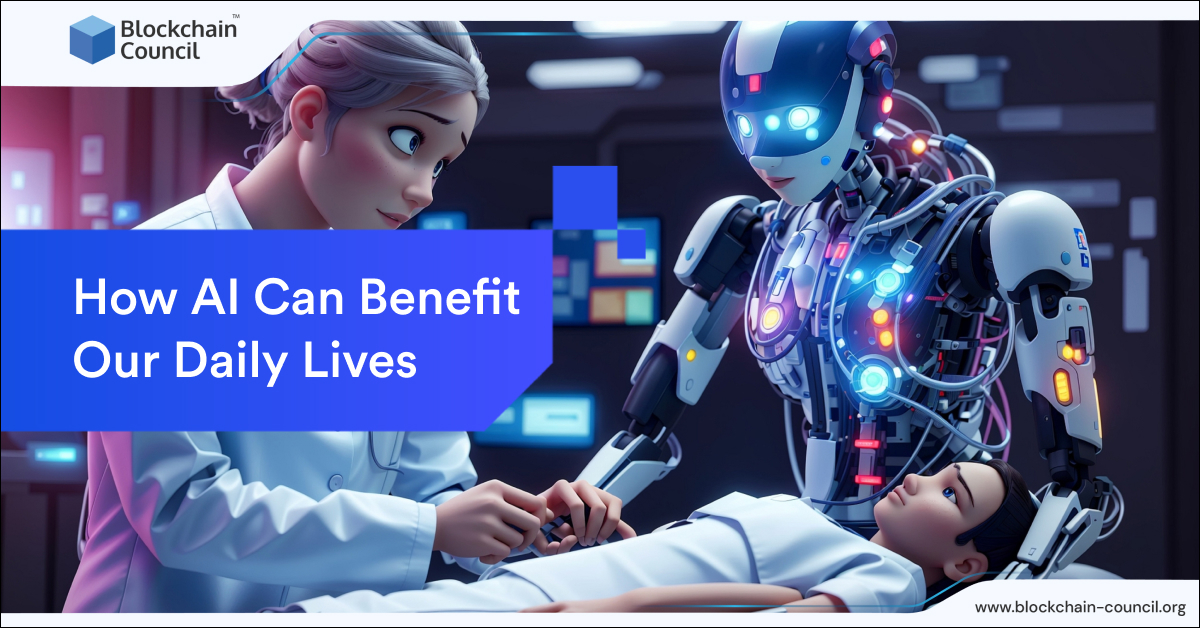
- Blockchain Council
- November 03, 2024
AI plays a key role in improving how production happens, especially when it works with robotics and automation. Across various industries, manufacturers are embracing AI-powered systems to save money, work more efficiently, and make production more accurate.
Introduction to AI and Robotics in Manufacturing
The combination of AI and robotics has been around for a while, but the way they’re used in production has become much more advanced. Robots can now manage complex tasks with minimal human involvement, thanks to AI-powered systems. These systems not only allow robots to do repetitive jobs precisely but also help in better decision-making. As a result, production lines can quickly adjust to real-time demands and shifts in supply.
Take Siemens, for example. They use AI to boost industrial automation, cutting the costs related to maintaining machinery. This also allows them to adjust workflows based on data analysis. Rockwell Automation also uses AI in predicting potential problems within manufacturing setups, helping avoid costly delays before they even happen.
Streamlining Production with AI-Driven Robotics
In today’s factories, AI is improving production in many different ways. It helps optimize everything from scheduling to managing inventory and even customizing the production process. AI can analyze large datasets, identify trends, and make quick decisions. For instance, Machina Labs uses AI combined with robotics to shape metal sheets faster, cutting down the time it takes to finish a product.
AI also helps in planning by spotting inefficiencies and bottlenecks before they turn into bigger problems. Tools like DELMIA Robotics look through massive data sets to tweak production schedules in real-time. This means companies can plan better and reduce downtime, which in turn boosts overall productivity.
Professionals aiming to capitalize on this advancement can benefit from the Certified Artificial Intelligence (AI) Developer™ certification. This program equips you with the skills to create and manage these systems for greater operational success.
AI-Enhanced Predictive Maintenance
A major impact of AI in manufacturing is its use in predictive maintenance. With sensors built into machines and robots, AI systems can detect signs of wear before a breakdown happens. This allows manufacturers to maintain equipment as needed, rather than waiting for something to fail. As a result, maintenance costs can drop by as much as 40%, especially in industries where IoT and IIoT technology is common.
Intel, for instance, uses AI for predictive maintenance in their production lines. This enables their teams to keep an eye on equipment and predict when it will need fixing, which helps avoid unexpected stoppages. This kind of system can save companies millions by preventing unplanned downtimes.
Improving Quality Control with AI
AI is also transforming quality control in manufacturing. Machine learning and deep learning systems can check products for flaws more quickly and accurately than humans. Robots that use AI-powered computer vision can spot even the tiniest defects on a production line, helping businesses cut down on waste and improve product quality.
For instance, companies like GE and NVIDIA are using AI-driven visual inspection systems for quality control. These systems examine images to spot flaws that human inspectors might overlook. This AI-based inspection process has increased productivity by as much as 50% in certain cases, while also ensuring products meet strict quality requirements.
Enhancing Warehouse Efficiency with AI
AI is not just improving production—it’s also making warehouses more efficient, especially in e-commerce. Companies like Amazon use AI to guide robots through warehouses, making sure goods are moved quickly and without accidents. Research from MIT has further refined these systems, reducing the time robots need to navigate crowded spaces in warehouses.
By managing the paths robots take, AI has increased warehouse efficiency up to four times compared to older methods. This optimization helps companies fulfill customer orders faster, leading to shorter delivery times and better overall satisfaction.
Collaborative Robots (Cobots) and Human Interaction
AI has also made collaborative robots, or cobots, possible. They also collaborate with people in production settings. Cobots are designed to take on tasks that need precision, like assembling or handling materials, while humans focus on more complex problem-solving tasks. AI lets these cobots adapt to changing production needs, boosting efficiency without compromising safety.
Siemens, for instance, has created cobots that work together with human operators to speed up tasks like packaging and sorting. These cobots are also helping smaller manufacturers adopt automation without having to completely replace their workforce.
Real-World Success Stories
AI and robotics are already being successfully implemented in various industries. For instance:
- BMW has used AI to improve its assembly lines, with robots handling tasks like painting and assembling, which helps reduce errors and speed up the process.
- Another example is Uptake, a company that provides AI software for industries such as mining and heavy manufacturing. This technology helps companies reduce energy consumption and streamline their operations.
- MIT researchers have also developed a neural network that manages hundreds of robots in warehouses. By predicting the best paths for robots to take, they’ve reduced congestion and improved order fulfillment times.
Conclusion
Combining AI with robotics is changing production processes around the world. From predictive maintenance to quality checks, AI systems are boosting the efficiency and cost-effectiveness of manufacturing. Both large companies and smaller ones are benefiting from this technology, enjoying lower costs, less downtime, and higher-quality products. As AI technology continues to improve, it will play an even bigger role in making production faster and more reliable.





































































 Guides
Guides News
News Blockchain
Blockchain Cryptocurrency
& Digital Assets
Cryptocurrency
& Digital Assets Web3
Web3 Metaverse & NFTs
Metaverse & NFTs
